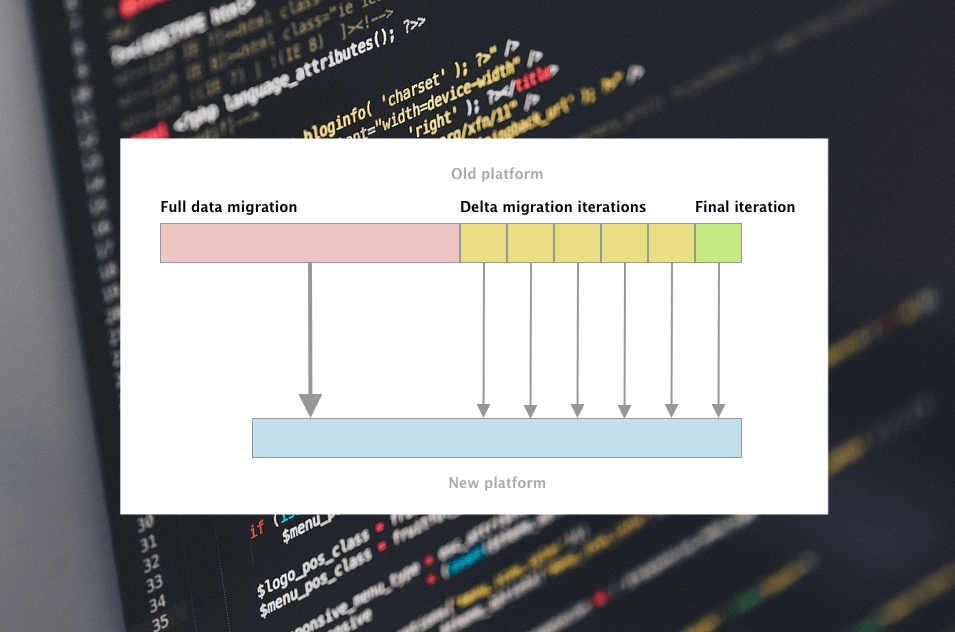Almost all eCommerce stores that keep up to date with the latest technology trends, striving to be modern and provide an optimal customer experience, have had experience with data migration, whether it was migrating to a new platform or switching from existing platforms to newer versions.
Data migration can be split into two categories Full data migration and Delta migration. Both ways can be applied to any project. Full migration is performed considerably more often and Delta migration is more complex and time consuming. Nevertheless, large enterprise-level merchants often opt for the latter.
Why?
What’s the difference between the two?
Here’s your answer.
Full data migration
Full data migration or just a data migration is the migration of all needed data from one platform to another when all data are transferred at once. A good benefit is that this is a relatively easy process, as developers have to map the data between the two platform databases and perform one-time data migration.
However, if you have hundreds of thousands of Orders, Customers, and products this will nevertheless turn into a lengthy process, and you can expect that switching between the platforms may take a significant amount of hours. Enterprise level merchants usually avoid this since long hours of downtime are unavoidable, potentially losing a significant amount of revenue. Which is why a different approach is often selected.
Delta migration
The end result of a Delta migration is actually exactly the same as that of a Full migration. Full data migration takes place in the background and not on the Live website. In parallel, “flags” are set in the Live database, helping us to separate and differentiate the the huge amount of data migrated in the background and the new data generated by the new customers.
This approach allows us to migrate only the newest data in one or several delta migration operations that usually take mere minutes. As this is the more complex way, the migration preparations tend to be more time consuming, but the principal benefit is most notable on the launch day, when the website downtime is significantly smaller.

Migration between different platforms
One often asked question is why migration between different platforms requires more effort than migration from older to newer versions of the same platform. The answer is simple – each platform has its own database data structure. When migration is performed within the same platform, data are usually (although not always) structured similarly and therefore easier to migrate.
When the migration is performed between different platforms, it requires additional layers in the middle allowing their data to be converted in the correct structure and format. What’s more, sometimes old data is incompatible with the new structure, requiring the introduction of new data generation.
Conclusion
Full data migration or Delta migration? There’s no right choice and it’s each merchant’s own decision. The principal thing to consider is the losses you would take during the downtime – the larger the losses, the more recommended becomes Delta migration, even despite the extra migration costs incurred in light of the extra planning and work.
If you want to learn more about data migration or can’t decide which method is more suitable for your business, contact us at [email protected], and let’s discuss your case.



Share on: